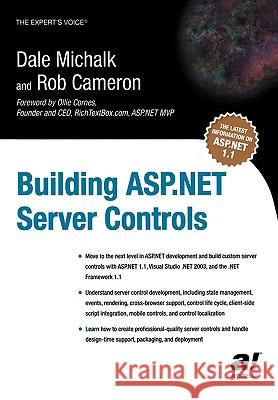Building ASP.Net Server Controls » książka
Building ASP.Net Server Controls
ISBN-13: 9781590591406 / Angielski / Miękka / 2003 / 880 str.
IN THE EARLY DAYS of the web it was great fun to craft web pages by hand, carefully placing each HTML tag onto the page. As time has gone on, we've acquired a wealth of new technologies, including CSS, JavaScript, and the full gamut of HTML standards, including XHTML and DHTML. These advances bring freedom but also complexity and an almost overwhelming array of choices. Few developers can intimately know all of these technologies, and even if they could, browser compat- ibility issues are often significant enough to humble the most hard-core developer. However, even with these new technologies, we still often feel that we're rein- venting the wheel each time we build a website. For example, when we create image buttons that change when the mouse pointer rolls over them, we're writing fresh JavaScript script. That script has to be written and tested, but it also adds potentially unhelpful complexity when we come to change the page later. Then when we want to reuse the script, we have to figure out how to transplant it neatly, and then go through the whole test cycle again to make sure we didn't break it. And if the user interface element is more complex-for instance, a pop-up menu, a navigational tool bar, or a rich form control-we disappear into a deep, dark pit of DHTML and script, and it may not be clear whether the work is worthwhile.











